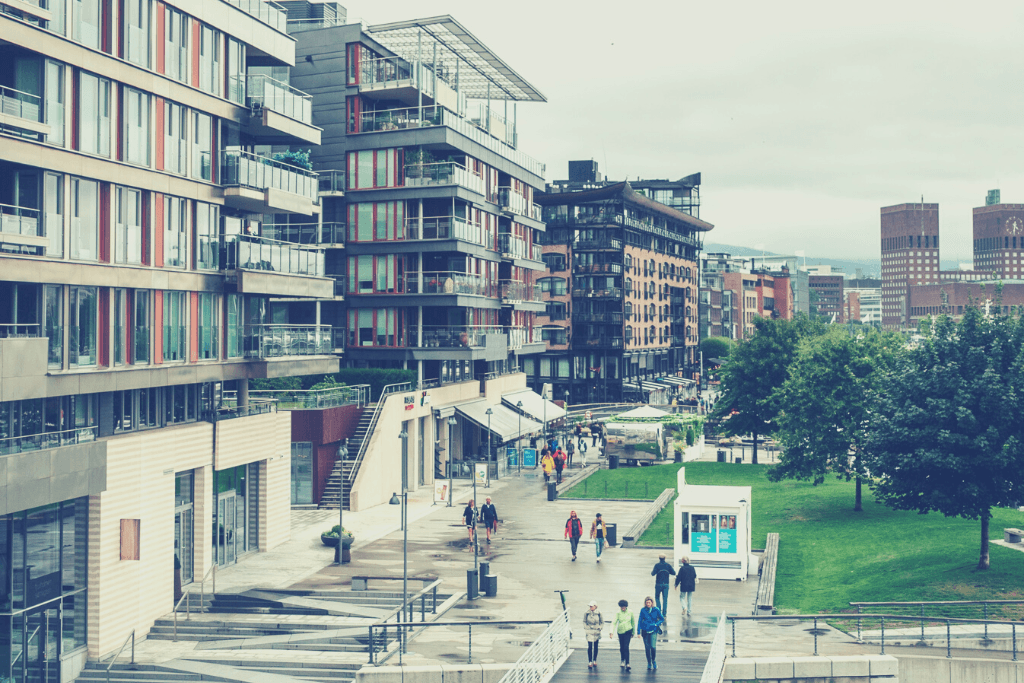Personal car ownership has defined many aspects of modern urban life as we know it. Without a doubt, cars can bring great convenience, comfort, individual freedom, and opportunities to their owners.
On the other hand, cars require an enormous amount of resources, both in terms of manufacturing and everyday use. In addition to being one of the significant offenders of climate change, in cities, personal cars sit parked about 95 percent of the time, according to RAC Foundation, and take up valuable space in urban centers.
Cars accelerate pollution levels, physical inactivity, and the risk of road accidents in our societies. Time and energy wasted due to traffic congestion can take a toll on a city’s livability, as well as the residents’ life qualities. Hence, it is no surprise that reducing our car dependency has recently emerged as a priority for urban designers.
Below, we explore some urban areas that have taken significant steps to go car-free. Whether they’re old or new and accompanied by imperfections, these urban areas are showing us the opportunities for car-free city life.
Fes, Morocco

The ancient Moroccan city of Fes is home to the world’s oldest and biggest pedestrian area. 9,400 winding streets in Fes el Bali, a commercial district of the city, plus a UNESCO World Heritage Site, are too narrow for cars. Thus, pedestrians, cart merchants, and sometimes donkeys dominate the streets.
Yet, the lively markets of Fes, which have been bustling with commercial activity for centuries, further prove that cars aren’t always vital for local economies.
Barcelona, Spain

As the popularity of Barcelona soared in the last decades as a major cultural and economic center of Southern Europe, so did the number of cars on the city’s streets. In 2016, the city of Barcelona started to implement the “superblocks“, 400 x 400-meter urban units – bigger than a block, yet small than a whole neighborhood — which are fully pedestrian.
As the concept gains popularity worldwide, Barcelona’s 2024 Urban Mobility Plan aims to create 503 superblocks throughout the city, with the hopes that these superblocks will mean over 80 percent of the inner-city travel in Barcelona will happen by foot, bicycle, or public transport.
Oslo, Norway

If anyone mistakenly drives to the car-free center of Oslo, they won’t find a spot to park as the Norwegian capital removed all the parking spots as a part of its Car-Free Livability Program. Since it was established in 2015, this program successfully eliminated the number of cars in central Oslo to nearly zero and dramatically reduced them in some other neighborhoods.
Results were beyond environmental benefits: In 2019, Oslo was the first major city in the world to have recorded zero pedestrian or cyclist deaths. Shops experienced a 10 percent growth in visitors. An increasing number of residents continued to move to the city center, rejuvenating the city economically and culturally.
Ghent, Belgium

The Belgian city of Ghent was among the forerunners of the car-free movement in Europe. In 1996, the city decided to create a pedestrian center of 35 hectares to reap the environmental, economic, and lifestyle benefits of ditching automobiles. As a result, central Ghent has been almost car-free since 2017.
A resident happy about these changes told The Guardian, “Personally I feel like the streets are more alive as they aren’t just for cars anymore. More people put their chairs out in the summer to sit on the pavement and talk, and some streets become ‘living streets’ where the kids can play outside, skate, and adults hold barbecues.”







